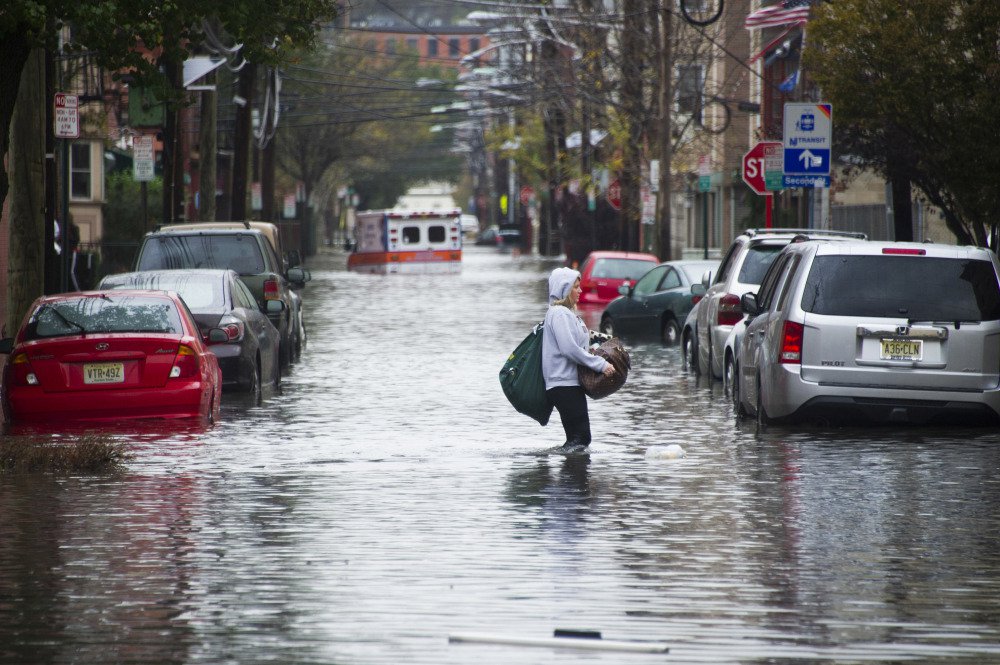Five years after Superstorm Sandy was supposed to have taught the U.S. a lesson about the dangers of living along the coast, disaster planning experts say there is no place in America truly prepared for climate change and the tempests it could bring.
That is true even in New York and New Jersey, where cities and towns got slammed by deadly floodwaters on Oct. 29, 2012, destroying homes, flooding tunnels and crippling the electrical grid.
Some coastal protection projects are moving forward, but the most ambitious ideas spurred by Sandy’s onslaught are still in the design stage, with questions about whether they will ever be built.
“It felt after Sandy as if we might have finally had our wake-up call,” said Eric Klinenberg, director of the Institute for Public Knowledge, a think tank at New York University. “We’d make the kind of investment in climate security that we made in homeland security after Sept. 11. But of course nothing of the sort has happened.”
After Sandy, which was blamed for at least 182 deaths in the U.S. and Caribbean and an estimated $65 billion in damage in this country alone, a government-funded competition called Rebuild by Design produced audacious ideas for defending the coast.
One, dubbed The Big U, would create 10 miles of floodwalls, berms and gates around lower Manhattan. Other ideas include erecting breakwaters around Staten Island that would double as oyster beds, and reconfiguring the Meadowlands, the polluted wetlands of urban New Jersey, with berms and marshes.
The U.S. Department of Housing and Urban Development put up $1 billion to get those projects started, but construction hasn’t begun.
Amy Chester, Rebuild By Design’s executive director, said it will take years just to complete all the planning and gain government approvals and community support. And it’s not clear how much these projects will ultimately cost.
There has been some progress.
Communities on the New Jersey shore built sand dunes to hold back surf, or fortified existing ones. Power companies and New York’s subway system have put flood protections around key infrastructure. Hospitals moved electrical equipment out of basements.
The Army Corps of Engineers is scheduled to begin construction in 2019 on a 5-mile-long, 20-foot-high seawall and promenade that would run along New York’s Staten Island in front of the neighborhoods hit hardest by Sandy. The project, which is still being designed, has an estimated price tag of $600 million and is scheduled for completion by 2022.
But progress has been slow. The huge cost of protecting the U.S. – easily hundreds of billions of dollars – is obviously a major hurdle.
But a study released Monday by an international team of scientists predicted that between 2030 and 2045, New York City could experience storm surges of over 7.4 feet every five years, primarily because of sea level rise. That’s up from every 25 years in recent decades.
Send questions/comments to the editors.



Success. Please wait for the page to reload. If the page does not reload within 5 seconds, please refresh the page.
Enter your email and password to access comments.
Hi, to comment on stories you must . This profile is in addition to your subscription and website login.
Already have a commenting profile? .
Invalid username/password.
Please check your email to confirm and complete your registration.
Only subscribers are eligible to post comments. Please subscribe or login first for digital access. Here’s why.
Use the form below to reset your password. When you've submitted your account email, we will send an email with a reset code.